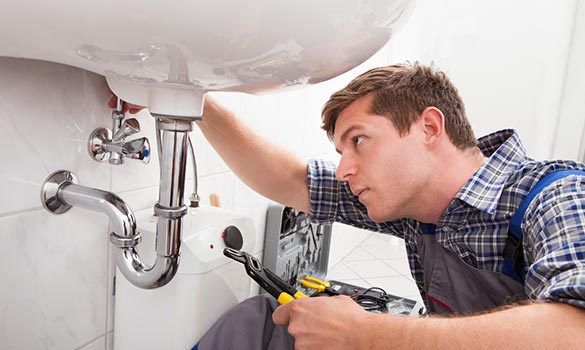Viva Resa: Your Gateway to Insightful Living
Discover news, trends, and tips for a vibrant lifestyle.
Plumbing Nightmares: How to Fix a Drip Before It Drenches Your Wallet
Discover easy tips to fix plumbing drips before they drain your wallet! Don't let a small leak turn into a costly disaster.
Top 5 Causes of Plumbing Leaks and How to Prevent Them
Plumbing leaks can lead to significant damage and inconvenience in your home. Understanding the Top 5 Causes of Plumbing Leaks is crucial for homeowners looking to prevent costly repairs. Firstly, pipe corrosion is a common culprit, particularly in older homes. Over time, metal pipes can develop rust and weaken, resulting in leaks. Secondly, high water pressure can stress your plumbing system, causing joints and connections to fail. It's essential to monitor your water pressure regularly and ensure it remains within a safe range to avoid this issue.
Next on the list is joint and seal failure. The connections between pipes can deteriorate due to various factors, leading to leaks. Regularly inspecting these joints and replacing worn-out seals can help prevent this. The fourth cause is temperature changes; extreme fluctuations can cause pipes to expand and contract, which may lead to cracks. Finally, root intrusion is a less obvious but significant cause; tree roots can invade plumbing systems, causing blockages and leaks. To prevent these issues, consider routine plumbing maintenance and professional inspections to keep your system in top shape.

Drip, Drip, Drench: When to DIY and When to Call a Plumber
When faced with plumbing issues, it's essential to discern when to DIY and when to call a professional plumber. Minor problems such as a dripping faucet or a running toilet can often be corrected with basic tools and a little patience. Simple tasks like replacing washers or adjusting the float valve may not only save you money but also provide a sense of accomplishment. However, if you notice signs like water stains on ceilings or walls, or a sudden increase in your water bill, these could indicate serious plumbing issues requiring expert intervention.
In cases where you're facing persistent leaks that lead to substantial water damage, it's crucial to call a plumber. Attempting to fix complex plumbing issues—such as clogged drains, sewer line problems, or pipe bursts—can lead to more damage and higher repair costs. A qualified plumber has the expertise and equipment necessary to diagnose and remedy these problems effectively, ensuring your home remains safe and functional. Knowing your limits can save you both time and money in the long run.
The Real Cost of Ignoring a Dripping Faucet: What You Need to Know
The sound of a dripping faucet might seem like a minor annoyance, but ignoring it can come at a significant cost. First and foremost, that drip can waste gallons of water over time. According to estimates, a single faucet that drips once per second can waste over 3,000 gallons annually. This not only impacts your water bill but also contributes to a larger environmental issue by increasing water consumption. Consider this: a small leak may result in not just higher utility bills but also lead to an escalation of plumbing repairs if left unaddressed.
Moreover, the implications of neglecting a dripping faucet extend beyond just financial burdens. If the leak worsens, it can lead to issues such as water damage, mold growth, and structural problems in your home. Over time, the moisture can seep into walls and ceilings, leading to the need for extensive repairs that will cost far more than fixing the initial drip. In summary, while the sound may seem inconsequential, the true cost of ignoring a dripping faucet is one that can burden both your wallet and your home’s integrity.